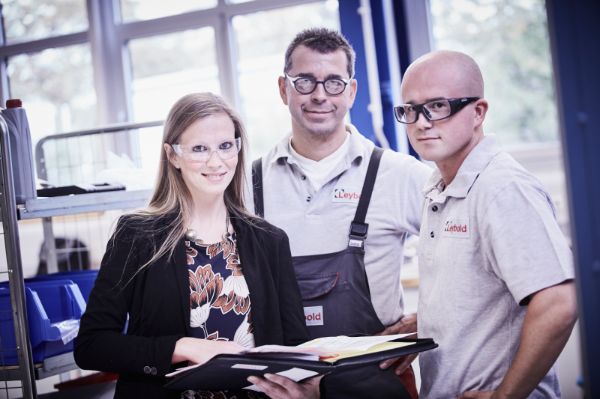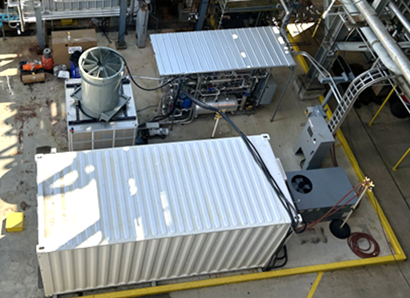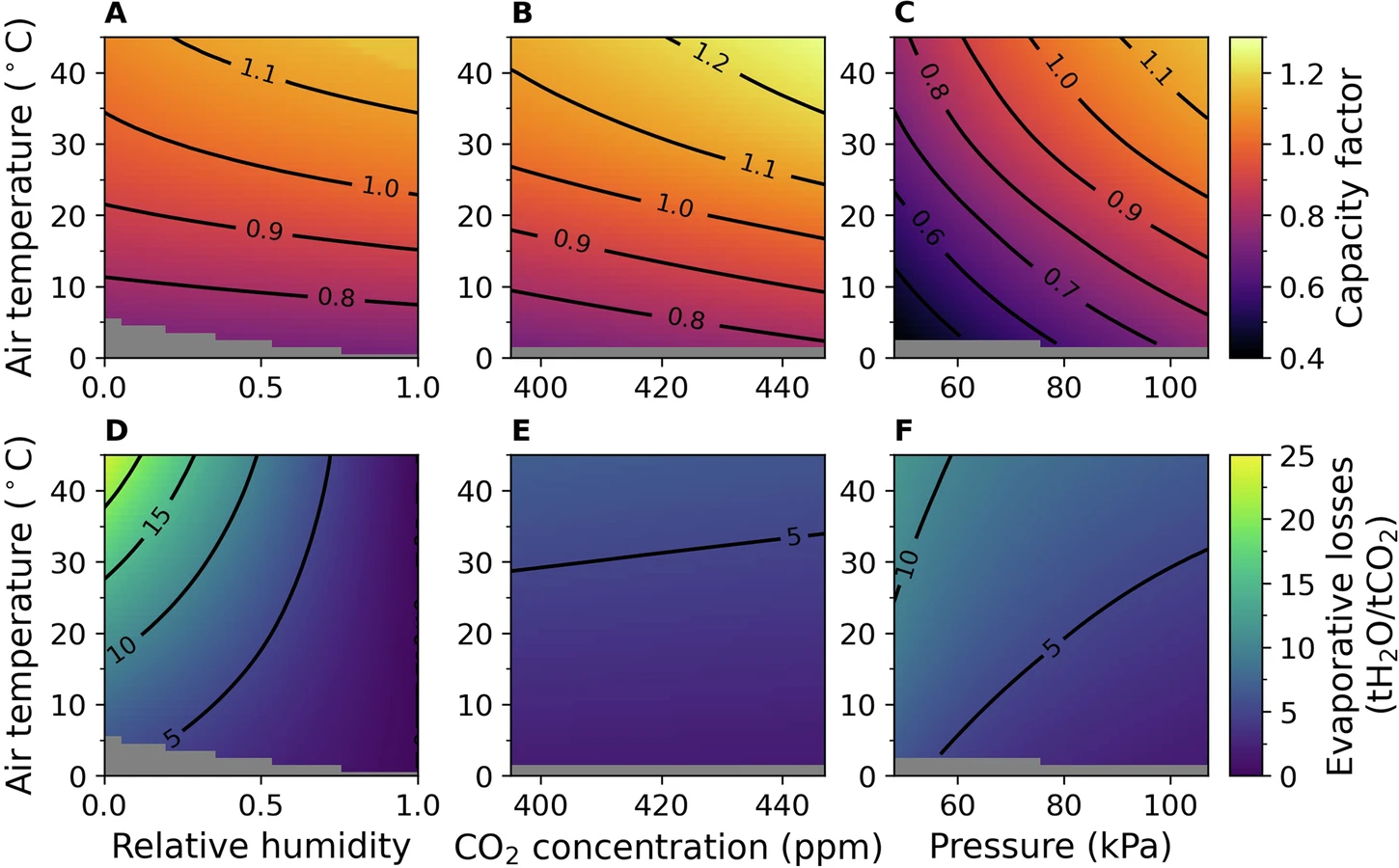Explore Our Curated DAC Resource Library
Explore the cutting-edge science and technology behind Direct Air Capture with our curated selection of expert resources. Featuring insights from reputable sources, this collection offers a comprehensive understanding of the advancements shaping this transformative field, keeping you informed and ahead of the curve

Source: 44.01
Berkeley’s Magic Material: Capturing Carbon From the Air Just Got Easier
Article by Najah Al Riyami, published in Oman Daily Observer on December 30, 2024
Oman is advancing the global decarbonization effort with Direct Air Capture (DAC) technology, which extracts CO₂ from the atmosphere. Despite being energy-intensive, DAC is crucial for achieving net-zero emissions. Omani startup 44.01 is leading a project to capture CO₂ through carbon mineralization in the Hajar Mountains, while Occidental Petroleum plans similar initiatives in Oman. With 27 DAC plants worldwide and more under development, DAC is set to play a key role in meeting climate goals.
DAC: Processes, types of DAC and Current state of DAC
Pranav Balaji at AlliedOffsets.com
The article highlights Direct Air Capture (DAC) as a promising carbon removal technology with growing global adoption. It explains how DAC works, outlines key methods of CO2 capture and regeneration, and emphasizes the importance of innovation to improve energy efficiency and scalability. While the current costs of DAC credits remain high, the market is rapidly expanding, driven by major buyers like Microsoft and Amazon, with projections of significantly lower costs by the 2030s. The message underscores DAC’s potential to play a crucial role in addressing climate change, provided technological and economic challenges are addressed.
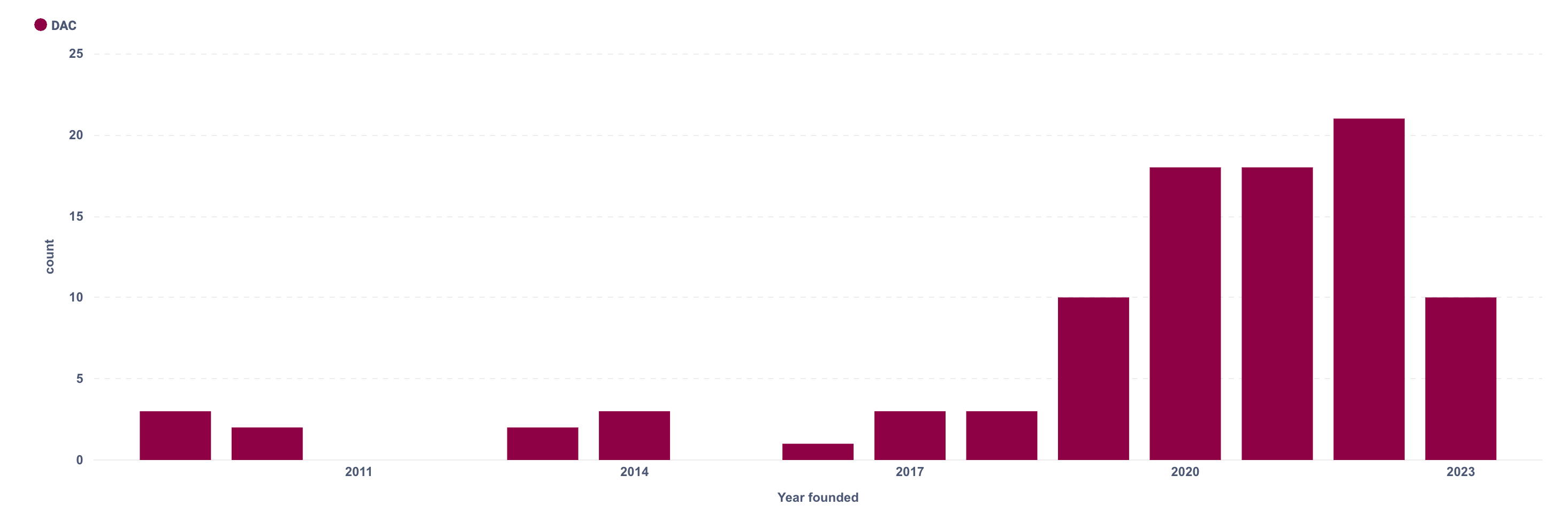
Source: ACS PublicationsACS Omega 2024, 9, 46, 45970-45982
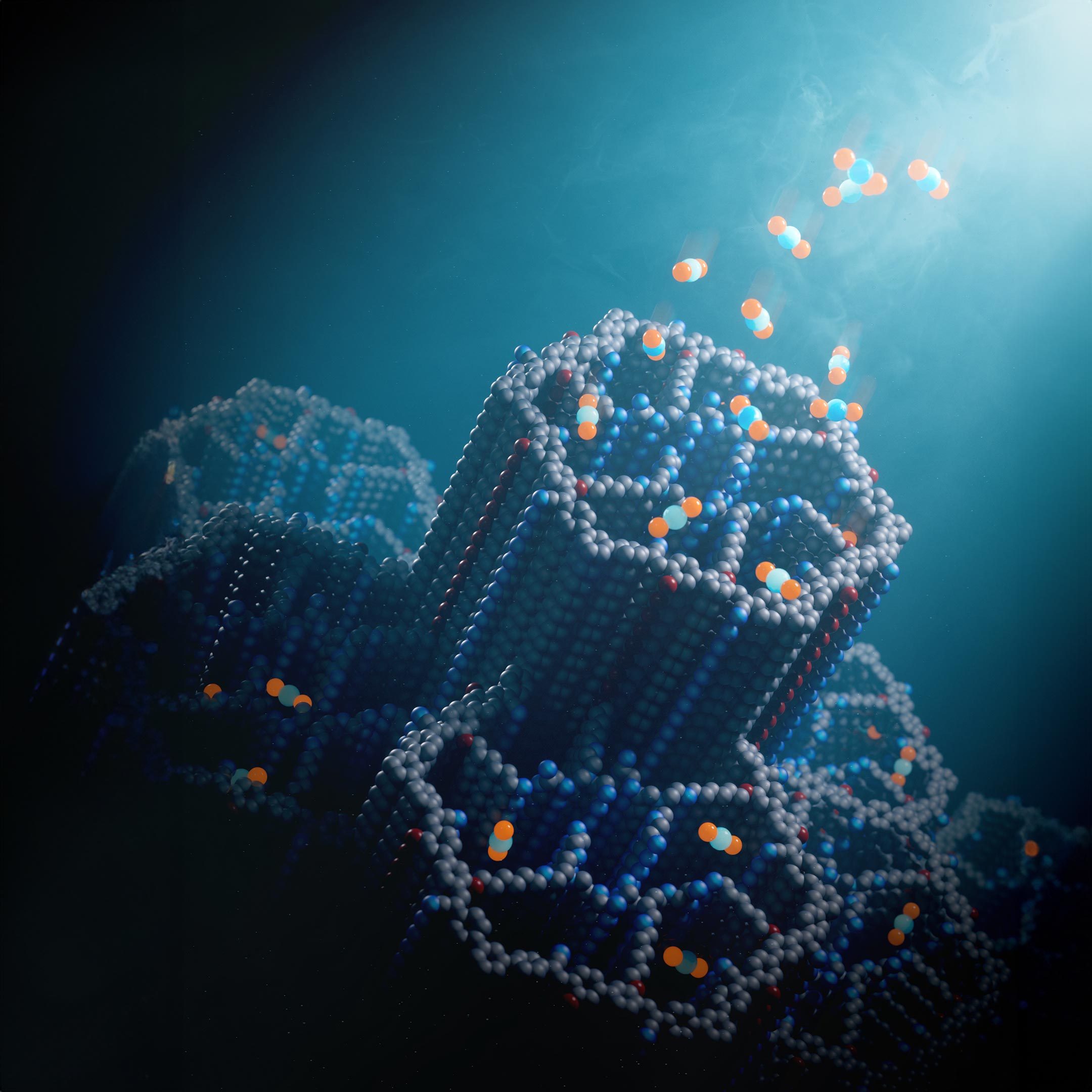
Source: scitechdaily.com Credit: Chaoyang Zhao for UC Berkeley
Berkeley’s Magic Material: Capturing Carbon From the Air Just Got Easier
Online News Article from SciTechDaily
Researchers at the University of California, Berkeley, have developed a new material that makes capturing carbon from the air more efficient and cost-effective. This breakthrough material could significantly improve the feasibility of direct air capture technologies, potentially aiding efforts to combat climate change.
Accelerated Testing of PEI-Silica Sorbent Pellets for Direct Air Capture
Harshul V. Thakkar, Andrew J. Ruba, John A. Matteson, Michael P. Dugas, and Rajinder P. SinghACS Omega 2024 9 (46), 45970-45982DOI: 10.1021/acsomega.4c05639
This study evaluates the degradation of polyethylenimine (PEI) sorbents for Direct Air Capture (DAC) of CO2, focusing on their stability in different environments. It introduces a novel, solvent-minimized synthesis method that reduces toxic solvent use by 94%. Results show that PEI sorbents degrade rapidly at high temperatures and in ambient air, with degradation exacerbated by dry CO2. Accelerated testing reveals greater degradation in dry CO2 environments compared to wet CO2 and inert conditions.
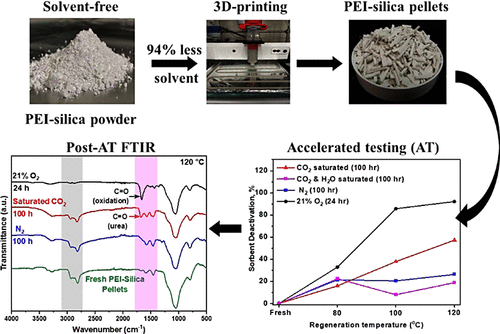
Source: ACS PublicationsACS Omega 2024, 9, 46, 45970-45982
NETL, Partners Complete First Direct Air Capture Field Test at National Carbon Capture Center
Online News Article from National Energy Technology Laboratory (NETL)
The National Carbon Capture Center successfully completed a direct air capture (DAC) field test, showcasing a solid amine sorbent system’s ability to capture and purify CO2. The test achieved a 95% CO2 purity after over 3,300 hours of operation, demonstrating progress in making DAC technology more cost-effective and scalable for reducing atmospheric carbon.
These 4 companies are removing carbon dioxide from the ocean
Artile by Andrea Willige, published in World Economic Forum
The article explores Direct Ocean Capture (DOC), a method of removing carbon dioxide from seawater to combat climate change, highlighting its efficiency compared to air-based carbon capture. It profiles four companies—Brineworks, Captura, Sea02, and another startup—innovating in this space, leveraging renewable energy and scalable technologies to enhance ocean CO2 absorption while producing beneficial by-products like green hydrogen.

Source: Unsplash/Cristian Palmer
Will Direct Air Capture Ever Cost Less Than $100 Per Ton Of CO₂?
Article by Phil de Luna, published in Forbes
Direct Air Capture (DAC) is a promising tool for combating climate change, but the widely cited $100 per ton CO₂ target is increasingly unrealistic due to inflation and technical challenges, with current costs closer to $500–$1,000 per ton. Instead of fixating on this goal, experts suggest using the social cost of carbon—$185–$266 per ton—as a more meaningful benchmark, as it reflects the economic damages of emissions. While DAC costs remain high, scaling the technology and aligning it with climate policies can still deliver significant benefits in mitigating future climate impacts.
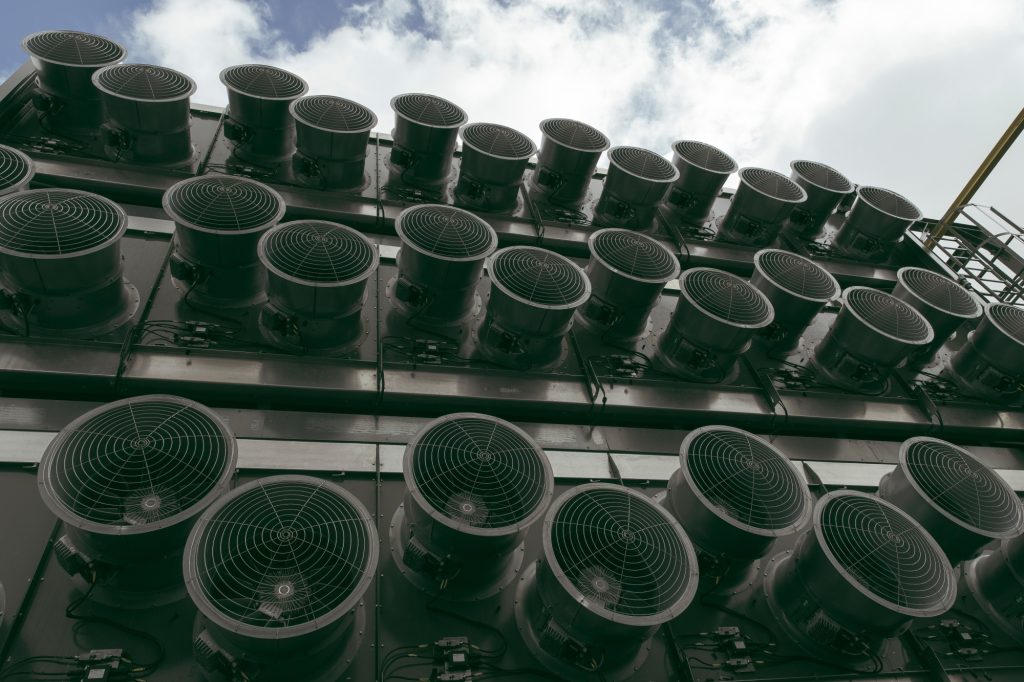
Photographer: Heida Helgadottir/Bloomberg
© 2024 Bloomberg Finance LP
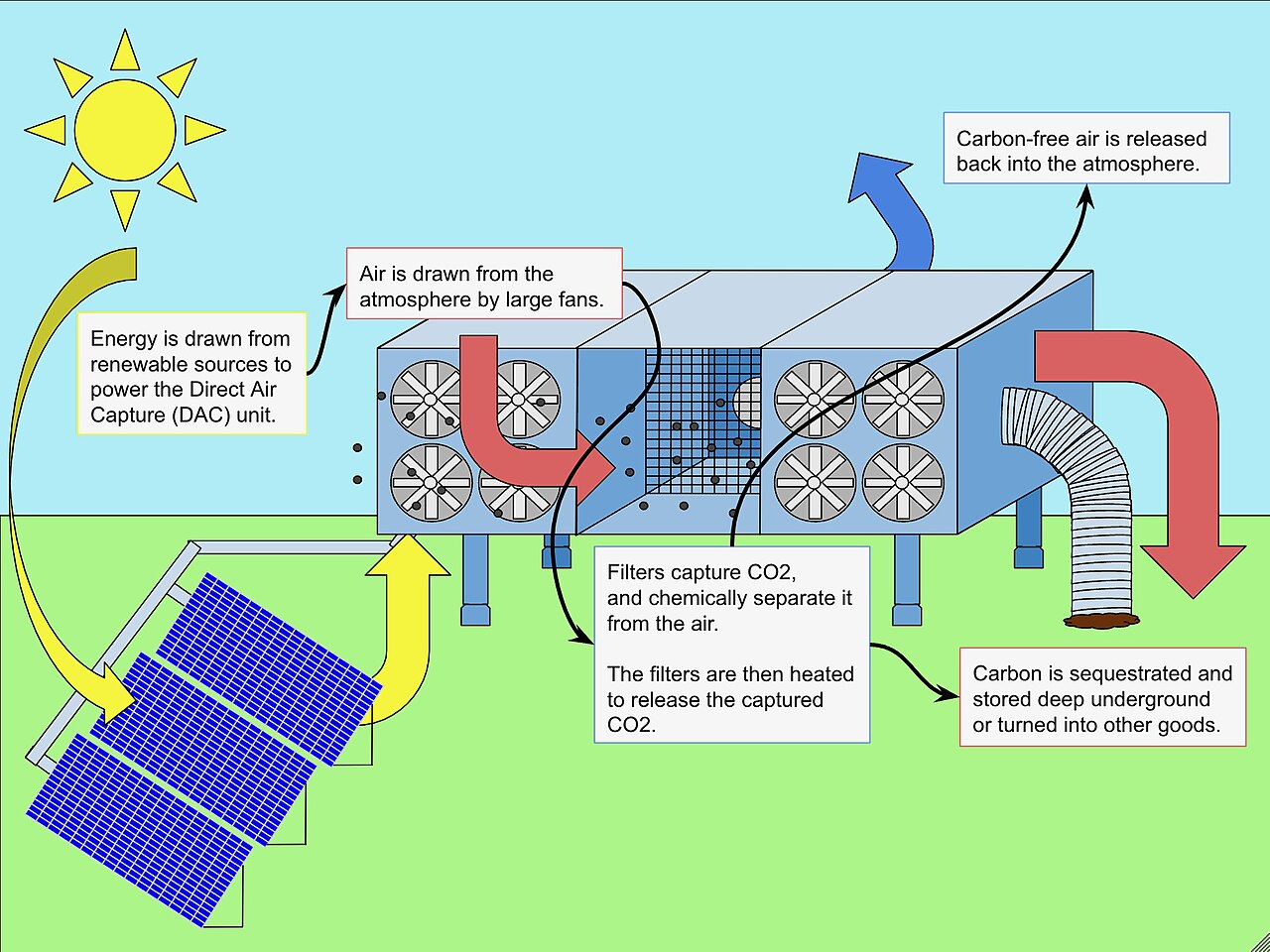
Source: StevenGandhi, Wikimedia Commons, CC BY 4.0
Coupling PV with direct air capture
Article by Emiiano Bellini, published at Pv-Magazine
Researchers from Shanghai Jiao Tong University propose coupling photovoltaic (PV) power plants with direct air capture (DAC) systems to reduce solar power curtailment and enhance DAC’s economic viability. Their study highlights that flexible DAC systems, which can dynamically adjust operations based on power availability, are more cost-effective than using battery energy storage. By utilizing excess solar power, DAC could address curtailment issues while lowering operational costs. The researchers predict this combination could become feasible by 2030, driven by rising carbon prices and decreasing costs of adsorbents.
A hybrid electro-thermochemical device for methane production from the air
A study by Huang, Y., Xu, D., Deng, S. et al. A hybrid electro-thermochemical device for methane production from the air. Nat Commun 15, 8935 (2024). https://doi.org/10.1038/s41467-024-53336-9
A novel hybrid electro-thermochemical device enables direct methane (CH₄) production from air by combining CO₂ and H₂ generation in one compartment, achieving 97.3% CO₂ conversion with 12.6% cost savings compared to traditional methods. This approach reduces energy use by 37.8%, presenting a promising pathway for sustainable fuel production.
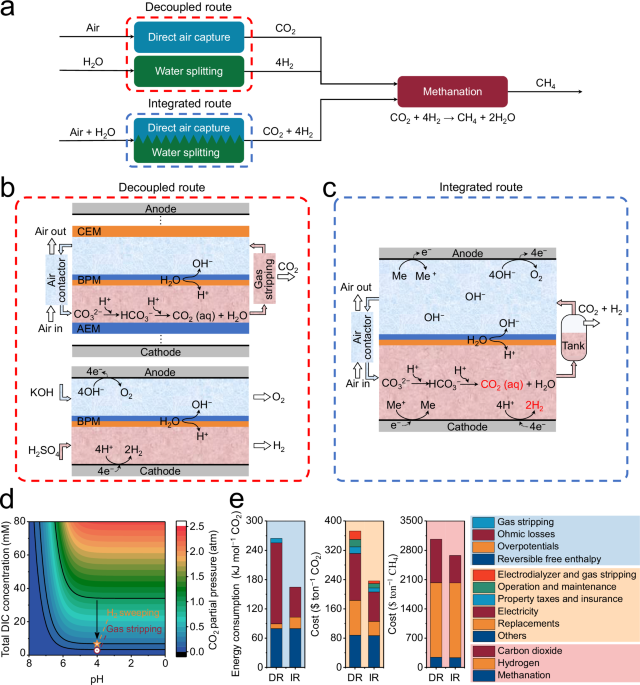
Source: Nature Communications, Photo by A hybrid electro-thermochemical device for methane production from the air

Source: www.openpr.com, Direct Air Carbon Capture Technology Market Projected to Reach
Direct Air Carbon Capture Technology Market Projected to Reach USD 7.53 Billion by 2030
Press Release from MAXIMIZE MARKET RESEARCH PVT. LTD
The Direct Air Carbon Capture (DAC) technology market, valued at USD 3.85 billion in 2023, is projected to reach USD 7.53 billion by 2030, growing at a CAGR of 10.05%. This growth is driven by rising awareness of climate change, increased governmental support, and advancements in carbon-neutral solutions, making DAC a key player in global sustainability efforts.
Liquid solvent direct air capture’s cost and carbon dioxide removal vary with ambient environmental conditions
Shorey, P., Abdulla, A. Liquid solvent direct air capture’s cost and carbon dioxide removal vary with ambient environmental conditions. Commun Earth Environ 5, 607 (2024)
Integrated assessment models show that large-scale carbon removal, including direct air capture (DAC), is key to stabilizing greenhouse gas levels. This study develops an open-source model for liquid solvent DAC, finding that cool climates and intermittent operation reduce efficiency, informing policy, investment, and engineering decisions.
Contact Our Experts
Want to learn how Leybold’s vacuum technology can enhance your Direct Air Capture system? Our experts are here to guide you through the possibilities.
Contact Us to discuss how our cutting-edge solutions can support your carbon capture initiatives and contribute to a sustainable future.
